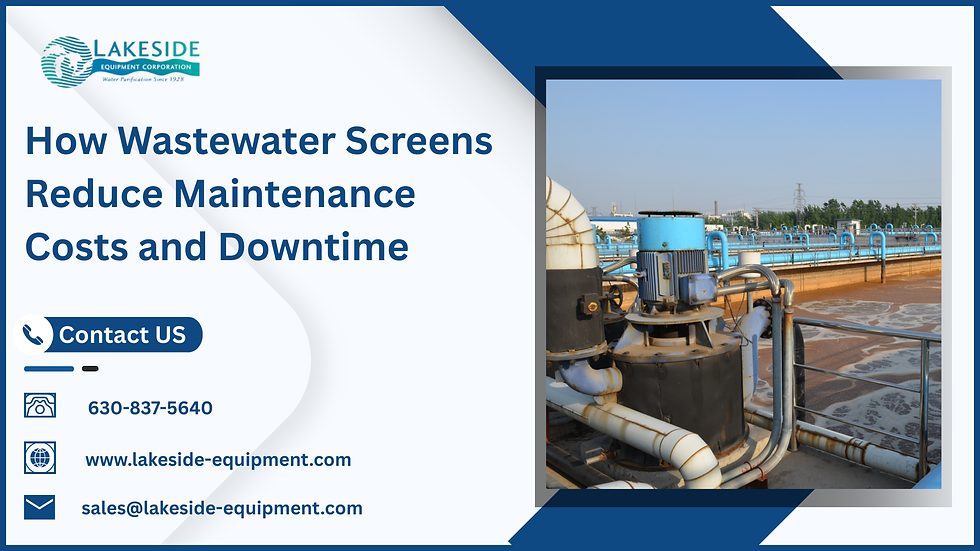Wastewater Screen and Its Types
- lakesideequipment

- Sep 20, 2022
- 2 min read
Wastewater screening is the unit operation in wastewater treatment plants. This screen retains solids present in the influent wastewater to the treatment plant. The primary purpose of screening is to eradicate solid materials that could-
reduce the efficiency of the whole system
damage other process equipment
contaminate waterways
Materials removed using screens are wastewater screens.
Wastewater Screens Classification
Screens are classified into three based on their opening size in the removal mechanism and screening element. They are-
Fine Screens
Coarse Screens
Micro Screens

1) Fine screens
In wastewater screening, fine screens have openings less than 6 mm. They consist of perforated plates, wire cloth, and wedge wire elements with smaller openings. They remove the fine solids present in the primary effluent. Fine screens are classified as:
Rotary Drum Screen
This screening type or straining medium placed on a cylinder rotates in the flow channel. The wastewater flows into the drum's end and through the screen outlet, with the accumulated solids on this interior or into the unit's top.
Step Type Screen
It has two step-shaped sets of thin vertical plates. One is fixed, while the other is movable. The fixed step plates alternate across the channel width and form a single-screen face. The movable plate rotates in a vertical motion.
Static Wedge Wire Screen
Large floor areas need such installation for screens. They must be cleaned once or twice daily.
2) Coarse Screens
Coarse screens (ranging from 6 mm to 150 mm) have parallel bars, wire mesh, wires or rods, or perforated plates with openings of rectangular or circular shapes. So, this bar rack removes coarse solids, including large objects and rags, to avoid clogs and damage to other appurtenances. Coarse screens are classified as-
Hand-cleaned screens
Mechanically cleaned screens
Hand Cleaned Screens: These coarse screens are helpful in small wastewater pumping stations. They have a straight approach, promoting uniform solids distribution throughout the flow and on the screen.
Mechanically Cleaned Screen: It reduces the functioning and maintenance problems to boost screening efficiency. This coarse screen type has four principles-
Chain-Driven Screens
Reciprocating Rake (Climber Screen)
Catenary Screen
Continuous Belt Screen
3) Micro screens Wastewater Screening
It has rotating drum screens with a variable low speed that consistently backwash while working in gravity flow conditions. The filtering fabrics should feature openings from 10 µm to 35 µm and
be fixed on the drum's periphery. The influent enters through fabric lined drum. The solids enclosed are gathered through backwashing and hauled for disposal.
Thus, wastewater screens play a crucial role in the wastewater treatment process




Comments